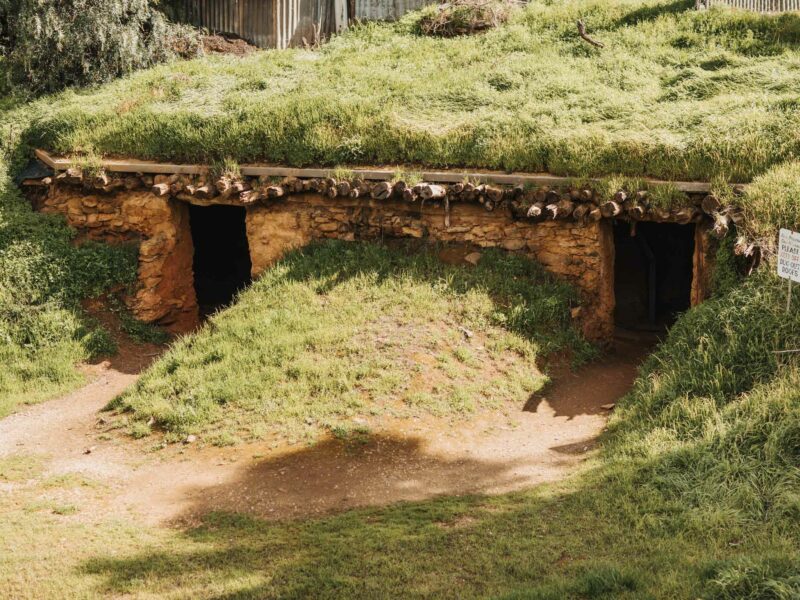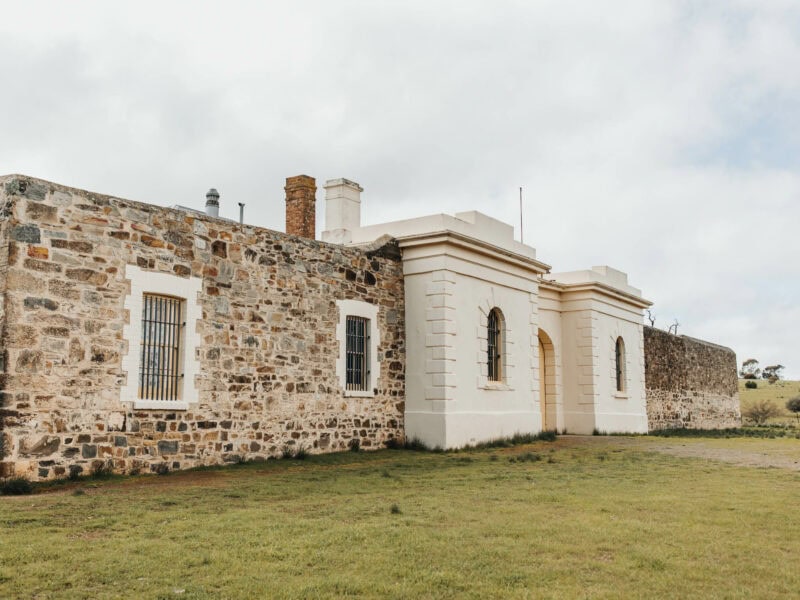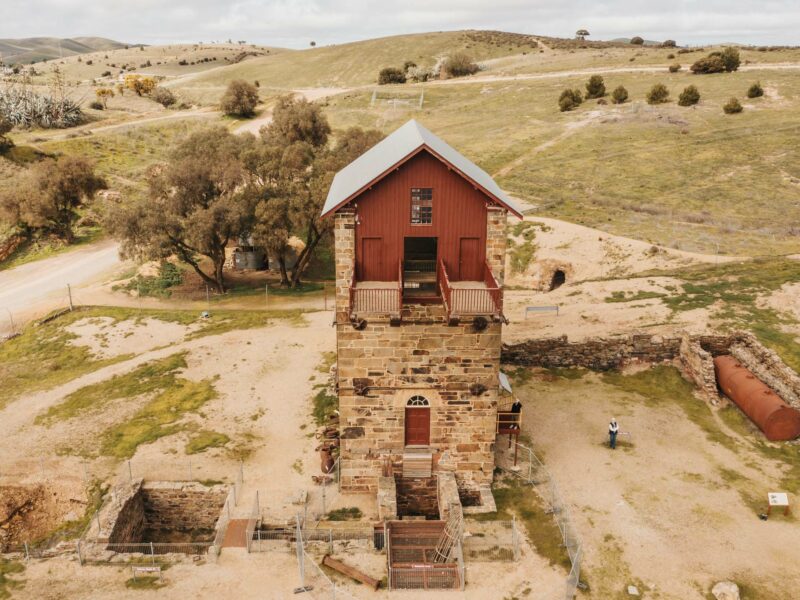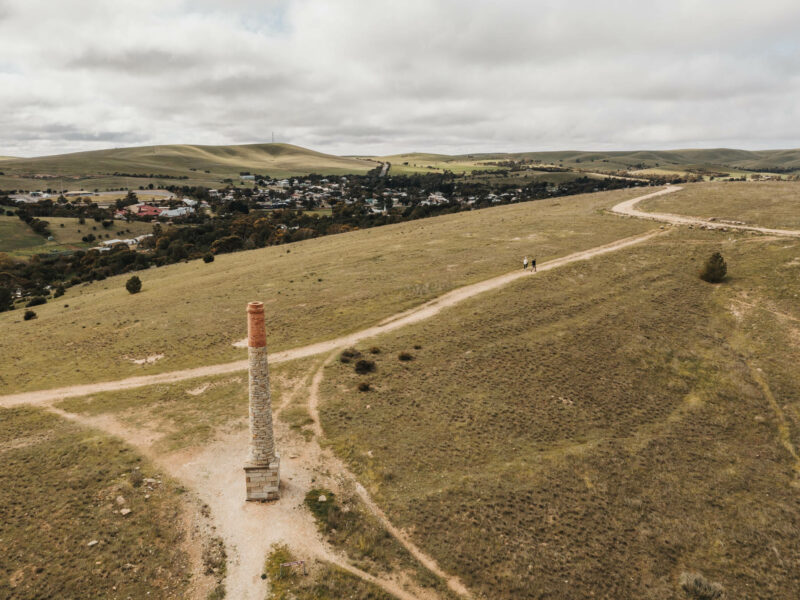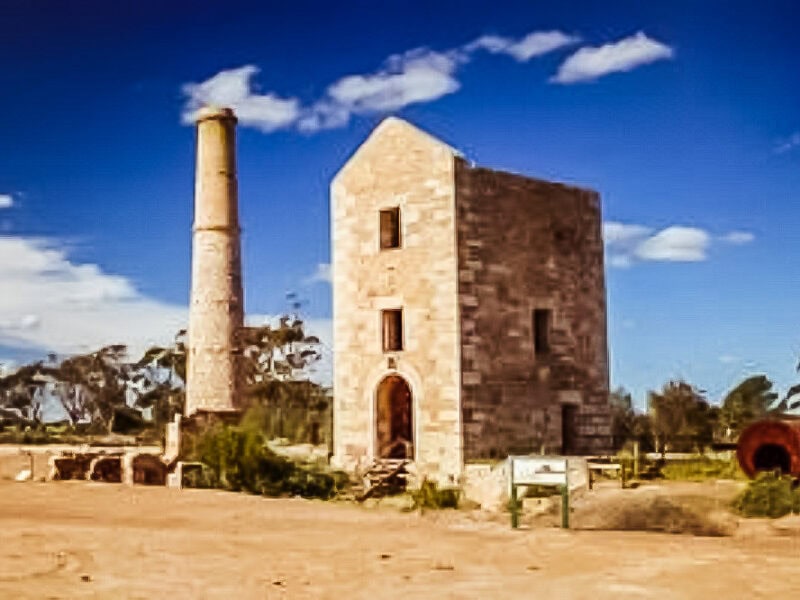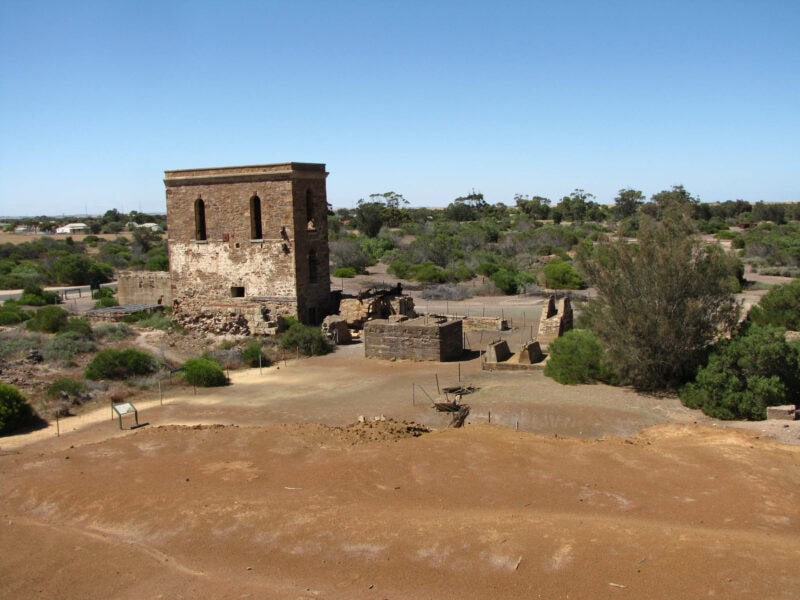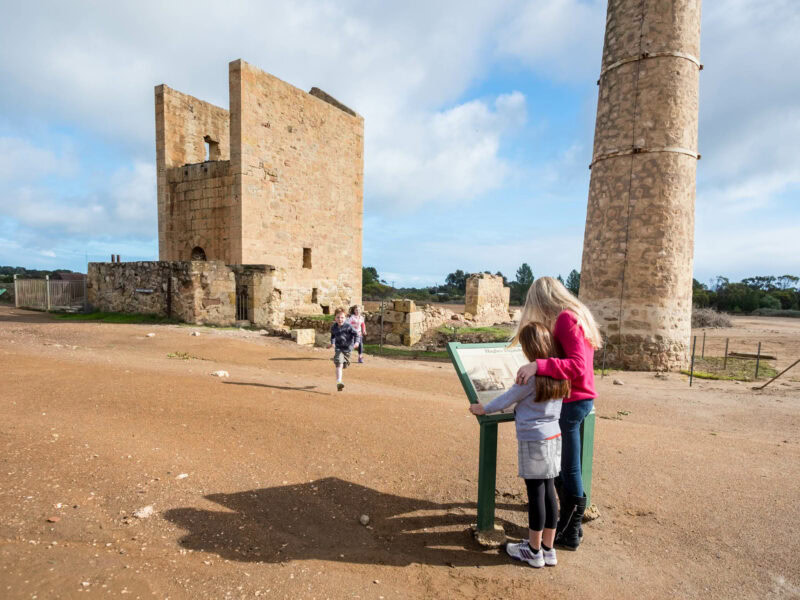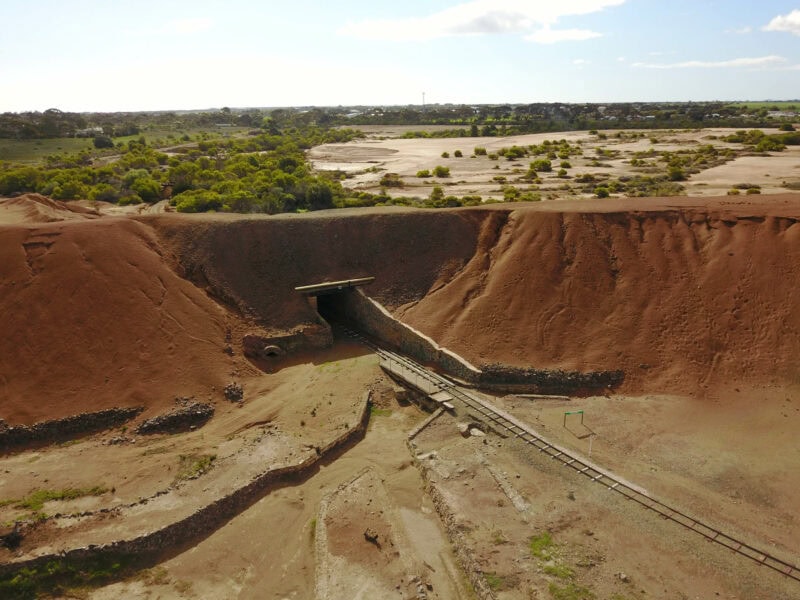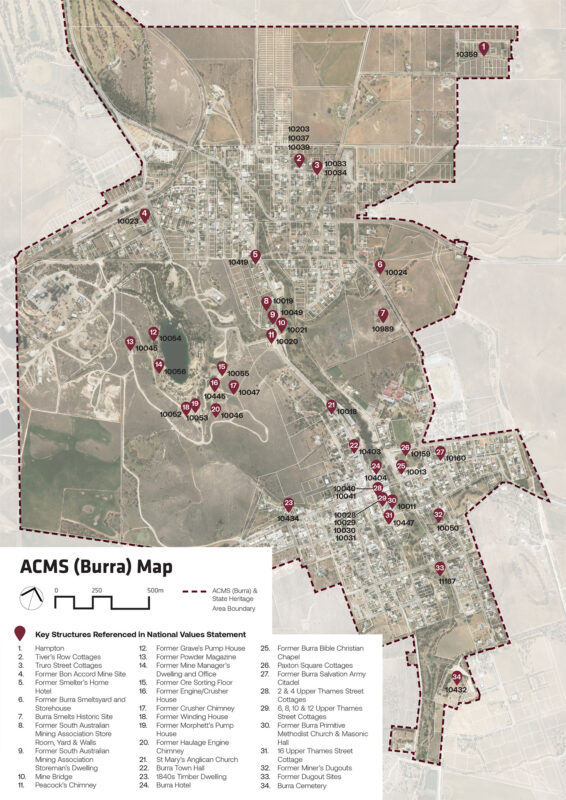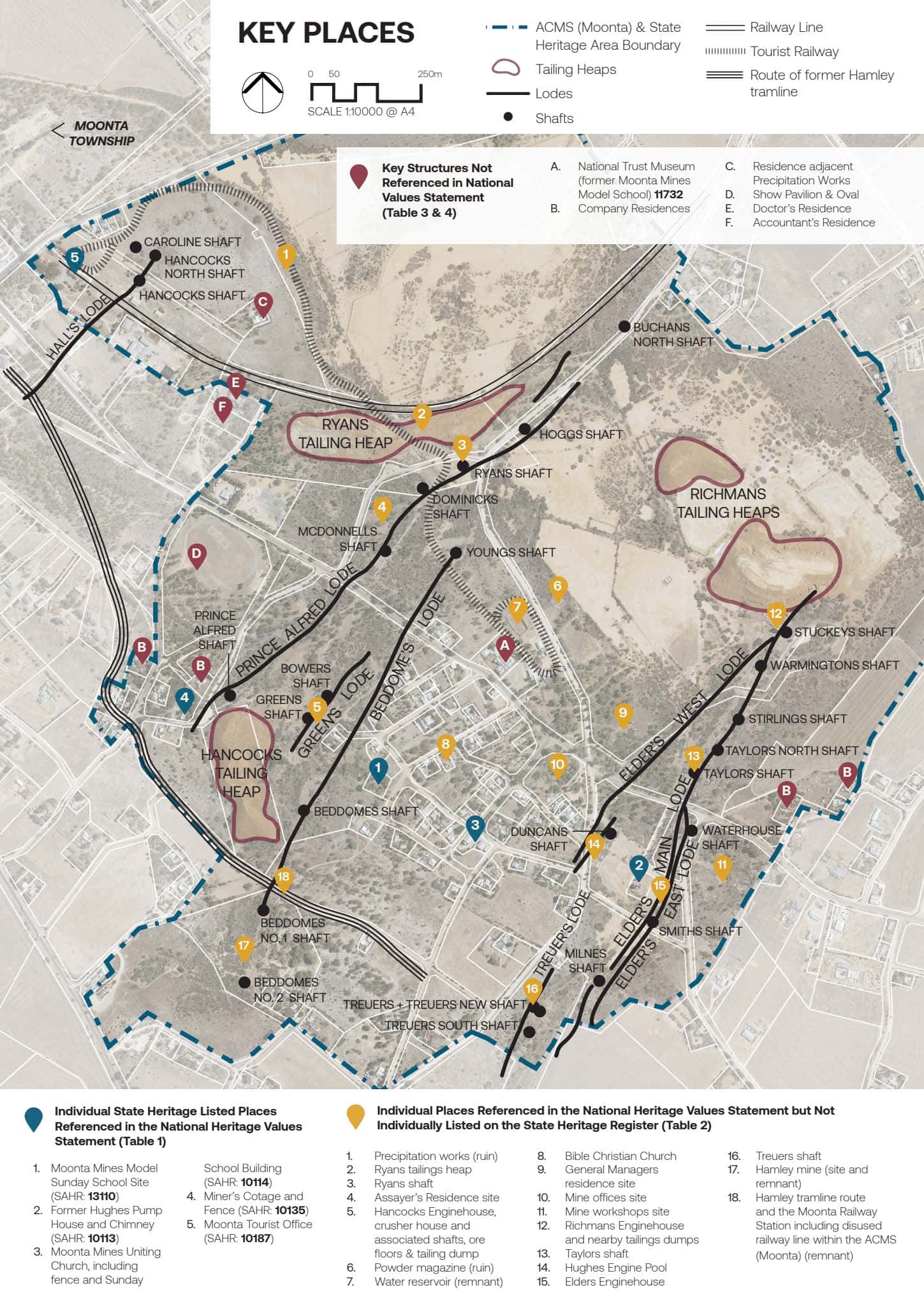Story of Australian Cornish Mining
Australian Cornish Mining Sites: Burra and Moonta, and particularly its characteristic engine houses as a technological ensemble in a landscape, represent places where Cornish mining technology, skills and culture are demonstrated to the highest degree in a surviving coherent cultural landscape. The site reflects the formative changes that the Cornish system made to mining practices around the world, and the substantial contribution that South Australia made to global copper production.

"Australian Cornish Mining Sites: Burra and Moonta ranks unequivocally as the preeminent property to demonstrate the successful transplant of Cornish Mining technology, skills and culture in its fullest and most cohert testimony."
Burra (1845 - 1877)
In 1845, copper was discovered at Burra Burra Creek by shepherd Thomas Pickett. His discovery led to the development of one of Australia's, and South Australia's, most important mines - The Burra Burra Mine. It is reputedly said that the Mine saved the young South Australian colony from bankruptcy. The copper lode was so extensive that it became known as the "Monster Mine" both in Australia and overseas, and South Australia soon became known as the Copper Kingdom. Thousands of Cornish miners and their families flocked to Burra joining the already well-established Cornish community in South Australia. They brought with them not only their mining expertise, technological knowledge, and engineering, but also their social and cultural customs, beliefs, and identity.
Read More
Moonta (1861 - 1923)
In May 1861, shepherd Patrick Ryan discovered traces of copper in earth that had been burrowed out of a wombat hole on the pastoral lease of Walter Watson Hughes. Hughes had anticipated that copper existed in the area and had earlier instructed his shepherds to bring him any indications of copper. Hughes secured mining leases over the discovery site and formed the Tipara Mining Association (later the Moonta Mining Company). In late 1861, mining operations began on what became known as the Moonta Mine.
In 1864, Henry Richard Hancock became Mine Captain and proved influential not only in terms of his management but also for his part in technical innovations namely the so-called Hancock jig which improved ore processing.
Cornish miners flocked to Moonta, bringing not only their Cornish mining technology and methods, but also their social and cultural traditions. The mine produced rich copper ore from the outset and the Moonta Mining Company was the first mining company in Australia to pay £1 million in dividends.
"Moonta's copper production established Australia internationally as one of the world's major sources and exporters of copper."

